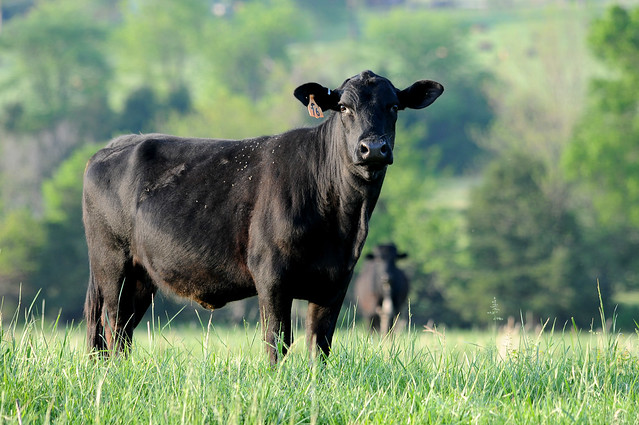Multiple options available for producers working to manage cattle nutrients
By Abbi Ross
U of A System Division of Agriculture
@AgNews479
Sept. 13, 2019
Fast Facts:
- Cattle graze large areas to consume sufficient forage for growth and maintenance
- There are a variety of ways to help with cattle redistributing nutrients in confined areas
(395 words)
(Download this story in MS Word format here.)
FAYETTEVILLE, Ark. — Cattle convert grass into meat, but in doing so they have to roam large areas to gather sufficient amounts of plant tissue for growth and maintenance. Dirk Philipp, associate professor of animal science for the University of Arkansas System Division of Agriculture, said that in doing so, cattle redistribute nutrients and concentrate them in a confined area.
Concentrations in a manure or urine patch can reach up to several hundred pounds of nitrogen per acre, Philipp said, if extrapolated. Urine and manure undergo immediate decomposition, mainly driven by soil moisture. The resulting concentrations of nutrients in those confined areas can exceed plant needs by several orders of magnitude, and the excess nutrients are left in the soil.
“Management strategies are needed to redistribute the nutrients as evenly as possible,” Philipp said. “But the biological processes involved make redistribution challenging. Since pastures and forage plants benefit most from even soil fertility, producers should strive for managing towards an even redistribution of nutrients as well.”
There are a variety of ways to achieve that, including proper grazing methods that move cattle around. Rotational stocking is popular, but there are a few things that should be considered.
Strip grazing is a good method to graze stockpiled forage, Philip said. If there are strips available for cattle daily, they will graze evenly and not trample fresh forage. Placing heavily used areas strategically and monitoring water access are also options for encouraging soil fertility and an even distribution of nutrients. High traffic areas like shade, feeders and salt licks should be moved frequently if possible.
“Don’t put the feeder next to a gate where they will loaf anyway,” Philipp said. “Cattle congregate around these features.”
Farmers should also discourage animals from spending extended periods of time around ponds or creeks, Philipp said. Cattle are prone to urinating in bodies of water, leading to many nutrients being lost.
Fencing ponds and only allowing cattle access to one section is a feasible and cost-effective approach, Philipp said.
Soil sampling is another key tool for farmers and ranchers in managing the nutrient load on their acreage.
“When soil sampling, sample heavy-use areas separately to account for differences in nutrient levels across the landscape,” Philipp said.
To learn more about Division of Agriculture research, visit the Arkansas Agricultural Experiment Station website. Follow us on Twitter at @ArkAgResearch and Instagram at ArkAgResearch.
About the Division of Agriculture
The University of Arkansas System Division of Agriculture’s mission is to strengthen agriculture, communities, and families by connecting trusted research to the adoption of best practices. Through the Agricultural Experiment Station and the Cooperative Extension Service, the Division of Agriculture conducts research and extension work within the nation’s historic land grant education system.
The Division of Agriculture is one of 20 entities within the University of Arkansas System. It has offices in all 75 counties in Arkansas and faculty on five system campuses.
Pursuant to 7 CFR § 15.3, the University of Arkansas System Division of Agriculture offers all its Extension and Research programs and services (including employment) without regard to race, color, sex, national origin, religion, age, disability, marital or veteran status, genetic information, sexual preference, pregnancy or any other legally protected status, and is an equal opportunity institution.
# # #
Media Contact: Mary Hightower
Dir. of Communication Services
U of A Division of Agriculture
Cooperative Extension Service
(501) 671-2126
mhightower@uada.edu
